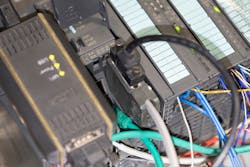Navigating the challenges of industrial process control upgrades
In temperate latitudes, tree-dwelling rodents labor to hide their stash to sustain them through the coming season of scarcity. They carefully choose stealthy spots that won’t be raided by their neighbors. One wonders what investments will bridge their enterprise to the next period of prosperity. Some of these remarkably clever tree dwellers will perish during the cold months; perhaps their buried stash will grow into trees for their progeny. Likewise, many manufacturing plants tried and failed to endure tough economies, which many of us witnessed in the Rust Belt decay of the midwestern U.S.
I got a curious piece of advice at one of our supplier’s offices. I was expressing some concerns about the degree to which their software “upgrades” were becoming sketchy in their support for fieldbus. Features we’d used for a couple decades didn’t function in the updated versions, which themselves were represented as minor or so-called “point” upgrades.
Their advice was to upgrade. “Upgrade to what” I asked. I can’t think of anyone offering a proven advanced physical layer (APL) solution. Their recommendation was HART 4-20 mA. It was a little bewildering.
“Fieldbus isn’t on the roadmap,” they said. So, for my next instrument purchase, should I start buying only HART 4-20 mA transmitters and valve positioners? How exactly should I wire them up? Maybe I should stay “on the bus,” risking a potentially rough ride to the dreary dustbin of decaying support?
Let’s imagine what such an upgrade would entail. Fieldbus can be replaced with a highly scalable remote I/O, some of which neatly integrates with my DCS. Since “field” infrastructure consists mainly of copper, twisted-pair cables and terminals, I'd need to invest in field-based DC power supplies in every junction box and specialized I/O hardware. To match the redundant UPS power supplied over the FF or PA twisted pair, I'd need to invest in redundant power supplies from diverse AC feeds. Hopefully my twisted pair “trunk” will function as a home run. Otherwise, I must run new Cat 5, Cat 6, or fiber-optics out to every field junction box. New hardware for integrating the remote I/O into the DCS is also required in the house.
Meanwhile, I need to buy all the field devices on a given segment. If you average 12 devices, that’s $20 million to $30 million or more, depending on the sophistication of the devices. There’s the cost of installation, cutover and loop checking, and the revision and checkout of all the DCS loops that used the device-resident fieldbus blocks. The HART signal is digital, but its low-amplitude, sing-song signal is noise prone, so 4-20 mA must be used for control. Do the units match what was configured in the fieldbus device? Is a square root required? Now imagine doing this for 1,000 fieldbus devices on 100 fieldbus segments. There’s an entire DCS upgrade to execute.
After this substantial and intimidating investment, will this upgrade sustain me through lean times? Gone are the fieldbus devices, which once relentlessly sent their measured value, on a deterministic schedule, regardless of the configured “full scale” of its analog input block. HART devices will saturate at 20-something milliamps, and yield no useful data beyond it. Precision is also eroded, as digital-to-analog and analog-to-digital must be performed at both transmitter and receiver. The unknown and potentially variable latency from remote I/O can impact loop tuning and performance.
While fieldbus devices would reveal wiring issues through communication drops and errors, 4-20 signals might drain off to ground, and deliver an unrevealed, biased result. Aside from my supplier diverting talent and resources from supporting fieldbus, I don’t see much advantage for the end-user. Vendors can also profit substantially from supplying an expensive, inferior system they’ve trapped me into purchasing. When will the support for that solution expire?
Our premier suppliers often proclaim they provide solutions. When they’ve created the problem, it will embitter their end-users if we bear the burden of deploying it. There’s no reason today’s fieldbus can’t last another 20 to 30 years, but we need our best suppliers to be on board with the end-users.
About the Author

Leaders relevant to this article:

